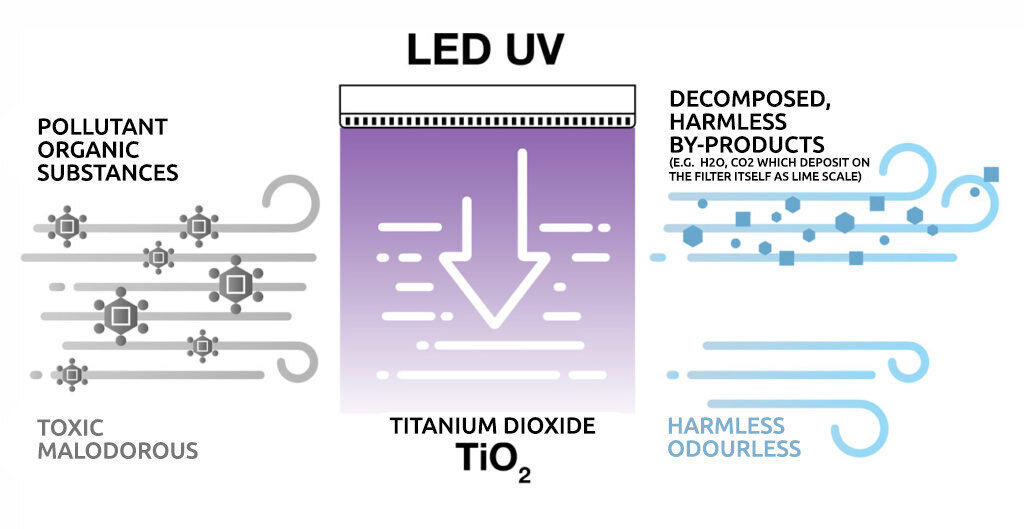Ultraviolet (UV) light can, if used at a sufficiently short wavelength, destroy the DNA of micro-organisms. This allows use of UV LED technology to be extended to the air treatment sector.
The photocatalysis process generated by the combined action of titanium dioxide, which acts as a catalyst, and UV lamps, decomposes the organic substances that can be responsible for foul odours; such substances include formaldehyde (the most toxic and mutagenic substance found in residential buildings of modern construction), Hexane, Butane and Propane (present in fuels, detergents and coolants), Chloroform and Ammonia (released by aerosol propellants, pesticides, coolants, degreasing agents) and, lastly, Acetone and Benzene (found in paints, glues, glazes, lacquers and detergents).
These chemical substances, mainly present in indoor environments, can cause asthma, allergies and degeneration of surfaces.
UV LED purifiers can eliminate up to 99% of allergens, moulds and bacteria in as little as 1 hour by circulating the air.
The same photocatalysis process can also be applied inside fridges, thus reducing the presence of ethylene, a major contributor to food ageing.

